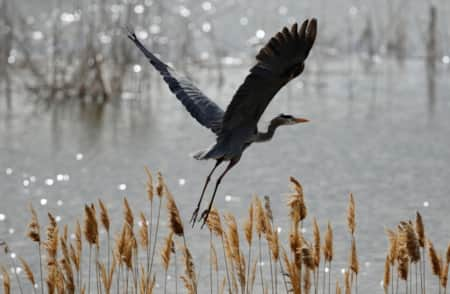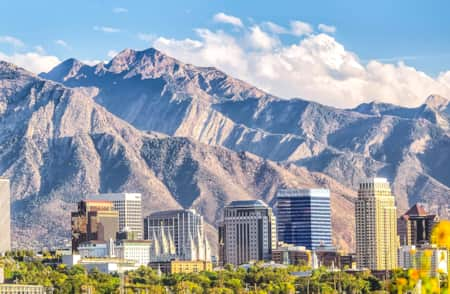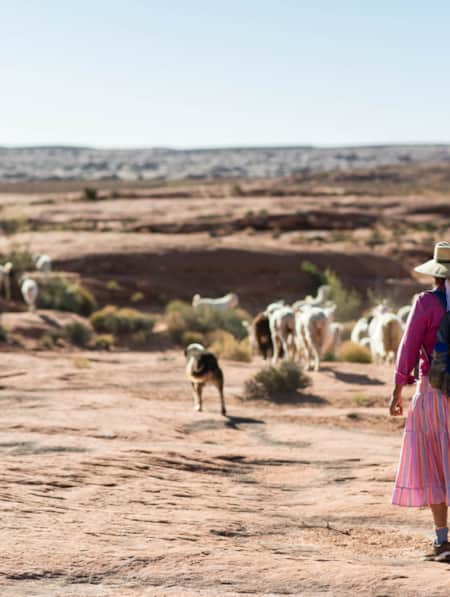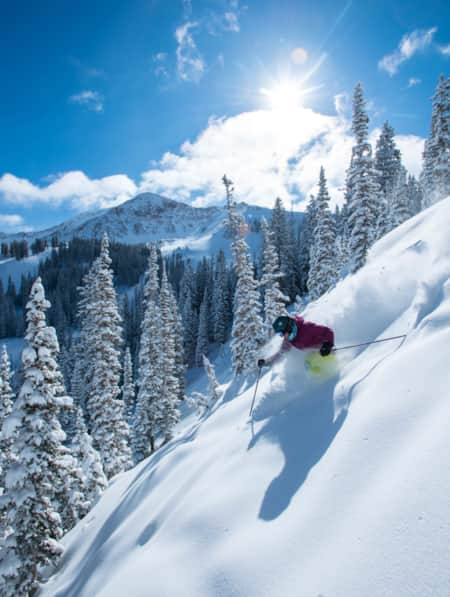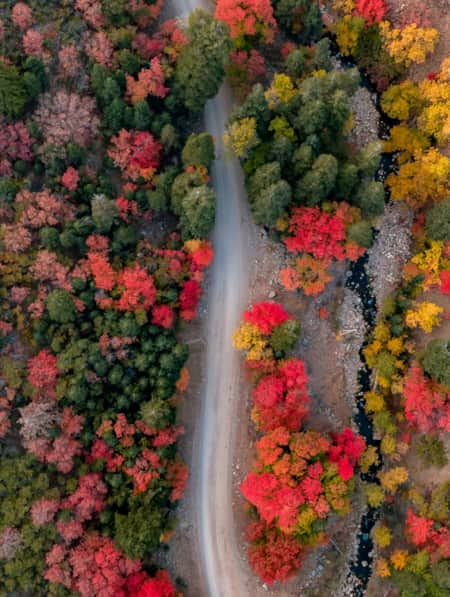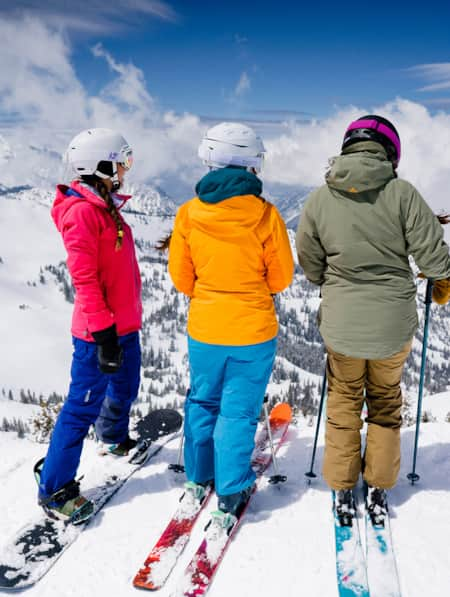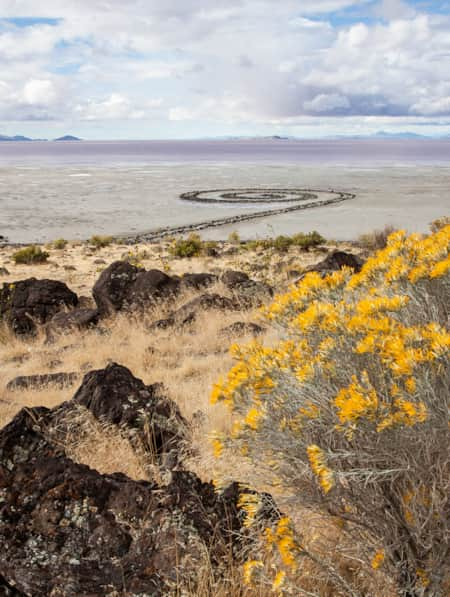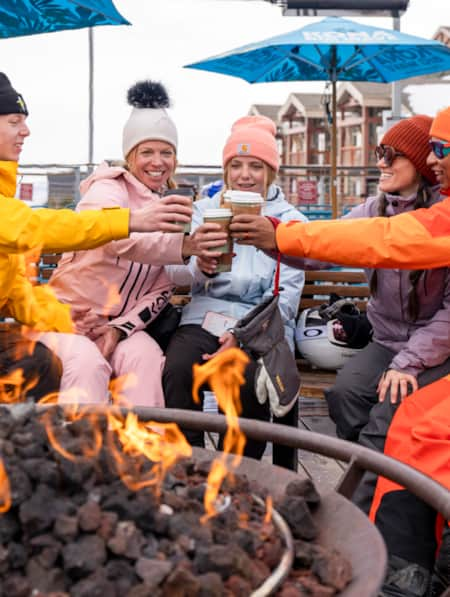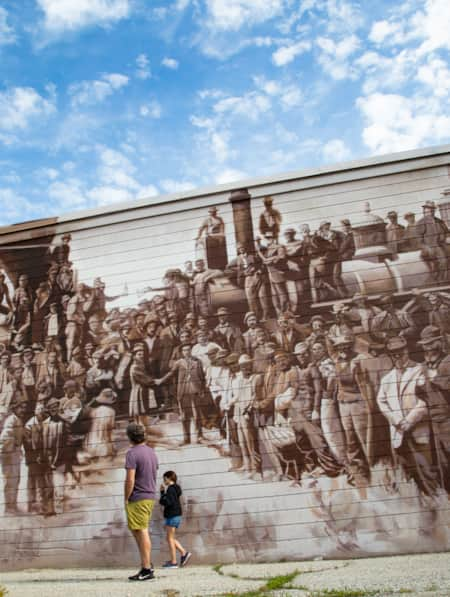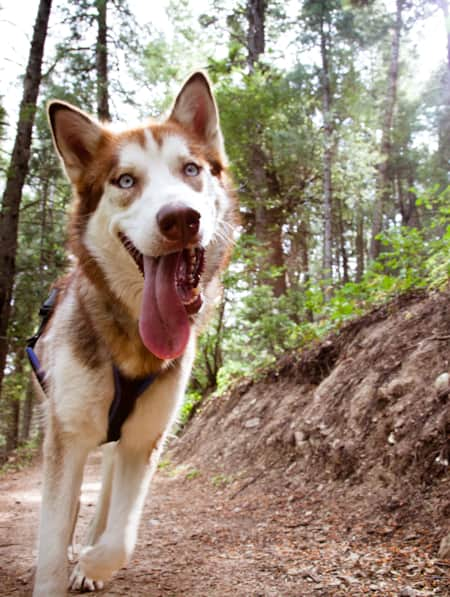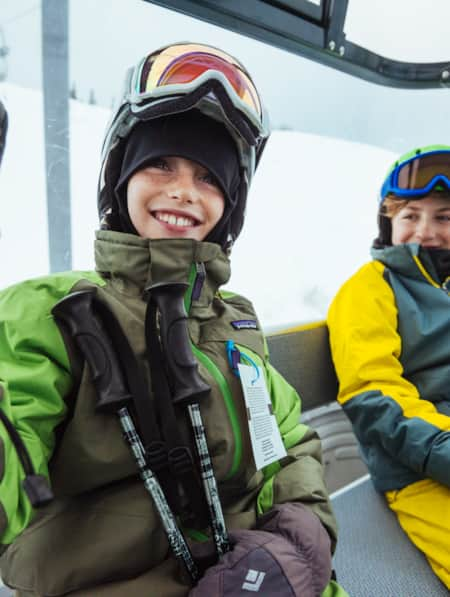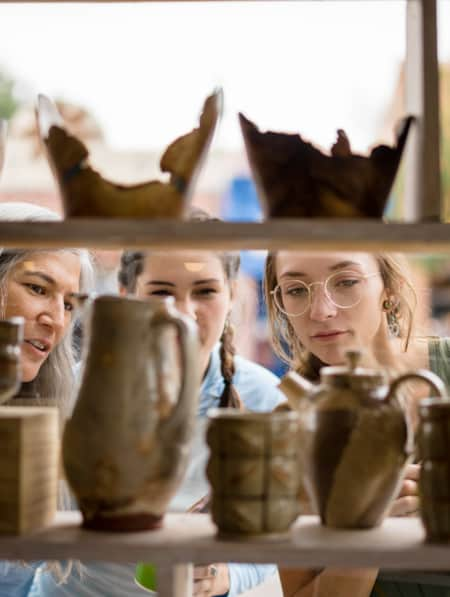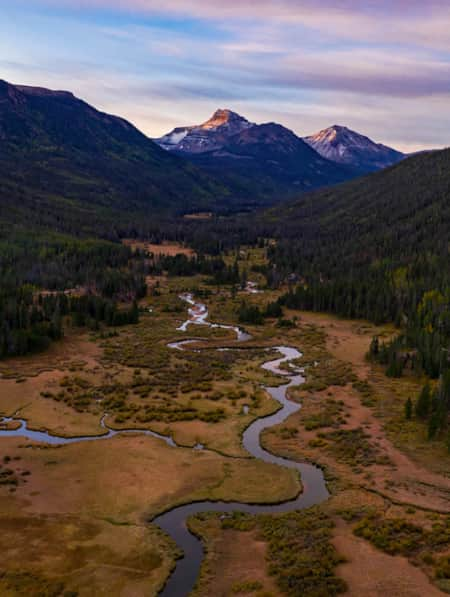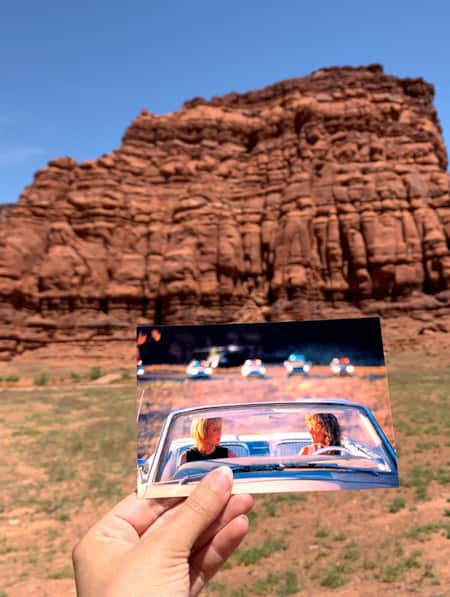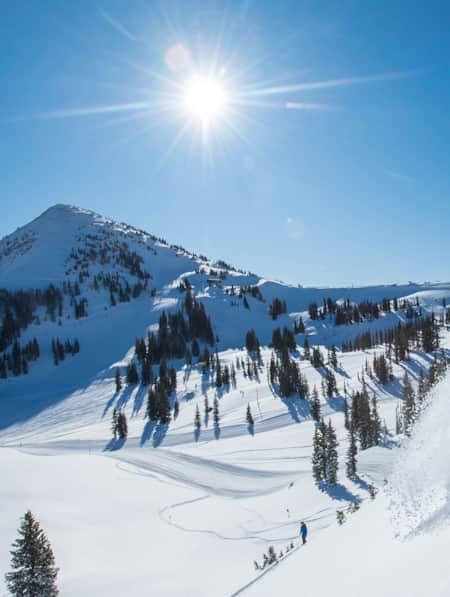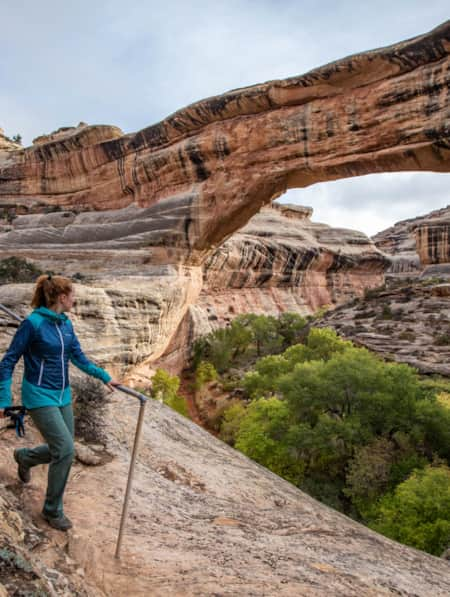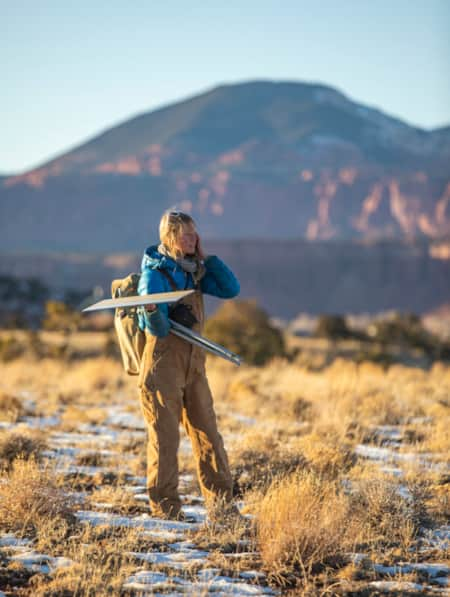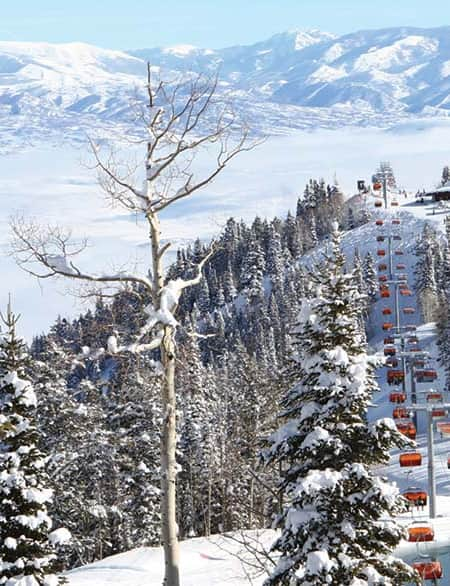Great Salt Lake Needs Your Visit
While you visit this mysterious natural wonder, you can also help save it.
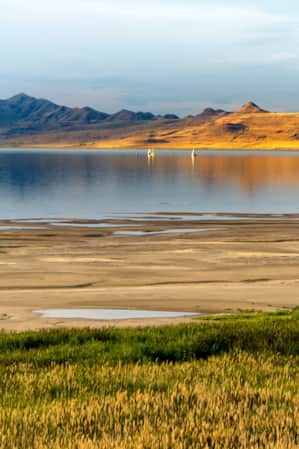
Close your eyes and imagine water between your toes. Not just any water. Crystal clear, intensely salty, warm water that tingles your skin and envelopes your whole body, lifting you up to the sky...a weightless offering to the powerful Utah sun. If you haven't yet floated in the Great Salt Lake, you're missing out. Even just a quick dip in the saline waters (on average about four times saltier than the ocean!) delivers sensations — and smells — that you'll never forget.
From magical walks in the wetlands to breathtaking sunset sails to unparalleled bird-watching thrills — the Great Salt Lake is one of nature's must-see marvels. And this is a place we want to make sure future generations get to know. But the Great Salt Lake is in dire jeopardy. Its waters have dropped to an all-time low, depleted by upstream diversions and climate change. The lake's historic decline threatens Utah's air quality, snowpack and economy. The loss of the lake would also mean the collapse of a vital ecosystem that supports more than 10 million migratory shorebirds and waterfowl each year. Can it be saved? In Utah, the race is on to change the lake's fate. Visitors like you can help preserve its natural beauty by adventuring safely, respecting the locals and leaving it better than you found it. That's the Utah Forever way.
Plan a Great Salt Lake pilgrimage this year as a way to boost your own well-being while also giving back to the lake. Your visit can support the parks, preserves and museums run by organizations working hard to protect the lake's future.
"From magical walks in the wetlands to breathtaking sunset sails to unparalleled bird-watching thrills — the Great Salt Lake is one of nature’s must-see marvels. And this is a place we want to make sure future generations get to know."
Where to Experience the Great Salt Lake
Antelope Island State Park
Why It’s Cool
Enjoy stunning views of the Great Salt Lake as you hike one of the many trails at Antelope Island State Park. Stop in at the visitor center for maps, displays on the island's natural history and must-have souvenirs.
Insider Tip
Check out the half-mile trail to the top of Buffalo Point for amazing views and photos. Summer and fall are great times to visit Antelope Island State Park. Wildlife can be seen moving around the island, water temperatures are ideal for floating and soaking and the bison roundup, which takes place in late October, is a truly incredible event to witness.
Make Your Visit Count
Antelope Island State Park exists to provide recreation and education to visitors at this one-of-a-kind natural wonder. This is a great location for you to experience and learn about the Great Salt Lake and your entrance fee or campsite dollars provide for the care and protection of the park.
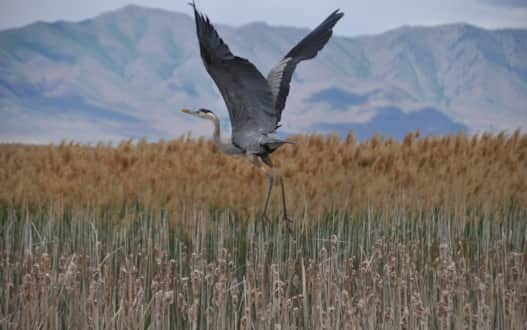
Over 200 bird species have been identified in the Bear River Migratory Bird Refuge and nearly 70 species use it to nest.
Photo: Brian Ferguson
Bear River Migratory Bird Refuge
Why It’s Cool
Located where the Bear River flows into the northeast arm of the Great Salt Lake, the Bear River Migratory Bird Refuge protects over 77,000 acres of wetlands — an oasis for waterbirds and wildlife. Here you’ll enjoy epic photography, wildlife watching, hiking, cycling, hunting and fishing. Check out the Refuge Wildlife Education Center for educational exhibits and events.
Insider Tip
In spring and summer, drive the Auto Tour and see breeding American avocets, cinnamon teal, grebes and many more winged friends. You might also see American white pelicans fishing in the wetlands.
Make Your Visit Count
The Bear River provides about 66 percent of the water that enters the Great Salt Lake. Without the Refuge's freshwater wetlands, bird species like American white pelicans and grebes would lose a critical food source. When you visit, become a member or donate to the Friends of the Bear River Refuge non-profit organization. You can also sign up to volunteer. Learn more via the U.S. Fish & Wildlife Service.
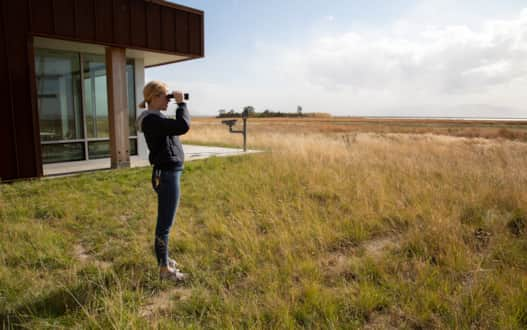
Farmington Bay is a birder’s paradise with more than 60 bird species regularly nesting at Eccles Wildlife Education Center.
Photo: Rosie Gochnour Serago
Farmington Bay's Eccles Wildlife Education Center
Why It’s Cool
Located on the southeastern shore of the lake, Farmington Bay Waterfowl Management Area is a bird watching paradise. Stop in at the Eccles Wildlife Education Center, located a half mile west of the management area, to visit with knowledgeable staff before exploring the many miles of trails and boardwalks winding around the wetlands.
Insider Tip
From the education center you can get an amazing view of about 24 great blue heron stick nests, called a Heron Rookery. The nests are up to 3 feet in diameter and 2.5 feet deep. The education center will increase your knowledge and appreciation of the Great Salt Lake wetlands and wildlife management activities and provide a new place to make lasting memories with friends and family.
Make Your Visit Count
The Utah Division of Wildlife Resources, part of the Utah Department of Natural Resources, manages Farmington Bay and serves the people of Utah by maintaining, sustaining and enhancing the state's wildlife populations and by conserving wildlife habitats. Find out how you can become a volunteer at the Eccles Wildlife Education Center at wildlife.utah.gov.
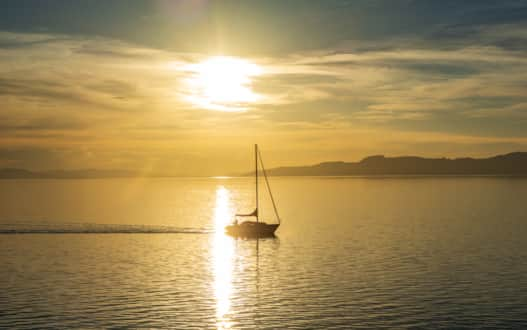
Enjoy Great Salt Lake State Park from the water — sunset boat tours are available for booking.
Photo: Charles Uibel
Great Salt Lake State Park
Why It’s Cool
Come float in Great Salt Lake! The Great Salt Lake State Park offers two beaches to get your toes (and more) wet as you enjoy the saline water. After your swim, take advantage of the showers and picnic tables. Great Salt Lake State Park also has a lovely visitors center to learn about the lake and buy souvenirs. During summer months, you can book a 45-minute boat tour, a sunset boat tour or a two-hour boat tour and float. All reservations go through Exclusive Excursions.
Insider Tip
In the summer, you can also enjoy popular events at Great Salt Lake State Park, like “Full Moon Walks.” Call Great Salt Lake State Park's visitor center or check online to see all park offerings and sign up for a ranger-led tour.
Make Your Visit Count
Use your visit to experience the lake’s rich habitats and wildlife. Operated by Utah State Parks, the mission of this park is to enhance the quality of life of Utahns and visitors by preserving and providing natural, cultural and recreational resources for the enjoyment, education and inspiration of this and future generations.
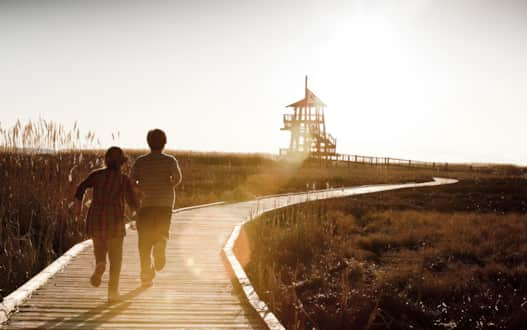
Bring a picnic to enjoy in the open-air pavilion at the center of the Great Salt Lake Shorelands Preserve.
Photo: Ian Shive
Great Salt Lake Shorelands Preserve
Why It’s Cool
Take an adventure into the heart of the wetlands. Situated along the Great Salt Lake’s eastern shore and operated by The Nature Conservancy, the preserve spans more than 4,500 acres of wetlands and uplands critical to migratory birds and waterfowl. You can walk the one-mile boardwalk loop trail, explore a range of educational exhibits and climb a 30-foot-high tower for amazing views of this unique wildlife habitat.
Insider Tip
Download the free preserve audio tour on your phone to hear stories about nature and wildlife as you walk. Come early in the morning or in late afternoon during spring and summer to get the best views of birds — the preserve supports more than 250 different avian species! You can also bring a picnic to enjoy in the open-air pavilion at the center of the preserve.
Make Your Visit Count
The Nature Conservancy (TNC) is a global non-profit working to create a world where people and nature thrive. In Utah, TNC has helped conserve more than one million acres of private and public land — including 12,000 acres of vital habitat around the Great Salt Lake. TNC also works with partners to improve policies and practices to protect the lake’s water levels. Visit this preserve, and get involved with TNC by donating, volunteering and more. Visit nature.org and follow the preserve on Facebook.
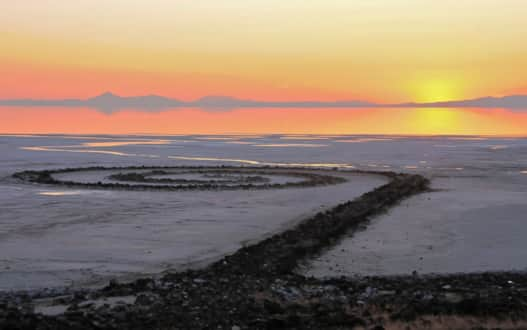
It took six days, 625 man-hours, 292 truck-hours, $9,000, and 6,500 tons of basalt, limestone and mud to construct the Spiral Jetty sculpture.
Photo: Denny Mont
Spiral Jetty
Why It’s Cool
Check out a world-renowned blend of art and nature! Spiral Jetty is an earthwork created by Robert Smithson in 1970. Located at Rozel Point peninsula on the northeastern shore of Great Salt Lake, the Jetty is comprised of 1,500 feet of coiled black basalt, which provides a stunning contrast to the pink microbe-rich waters (Read: At 50, the Spiral Jetty Keeps Drawing a Crowd).
Insider Tip
The Spiral Jetty is not only important for art lovers. It’s also a valuable site for Westminster College’s Great Salt Lake Institute, where scientists and students are studying the extreme halophiles — the microorganisms in the colorful waters around the Jetty (Read: A Biologist Explains the Lake’s Mysteries). The Jetty is owned by Dia Art Foundation. Discover trip planning resources at diaart.org. (Visitors should be mindful that low water levels at the Great Salt Lake have increased the natural presence of tar around the Spiral Jetty shoreline. Watch your step and keep dogs on leash.)
Make Your Visit Count
The Great Salt Lake Institute (GSLI) at Westminster College endeavors to connect people to Great Salt Lake through research and education. You can support GSLI’s important role in building an understanding of the lake’s unique and complex ecosystem. GSLI runs community field trips and offers high school and college curricula and resources, as well as undergraduate research programs. Learn more at westminstercollege.edu.
Learning Beyond the Shores
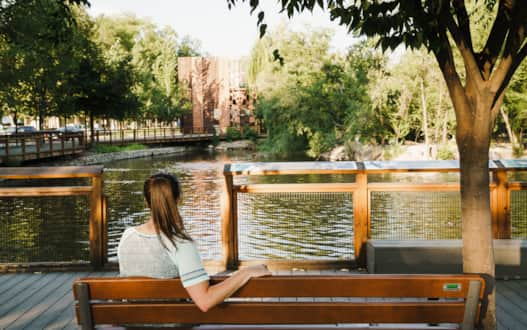
Based in Salt Lake City's Liberty Park, Tracy Aviary donates a portion of each admission and membership to conservation projects.
Photo: Austen Diamond/Visit Salt Lake
Tracy Aviary in Liberty Park
Why It’s Cool
This is a Great Salt Lake experience that you can enjoy “in town.” Among its exhibits featuring birds from around the world, Salt Lake City's Tracy Aviary also cares for species found right here in Utah. See American white pelicans closer than you've ever seen them before, and learn about how the waters of the Great Salt Lake are critical for protecting their nesting habitat on Gunnison Island.
Insider Tip
In the summer, beat the heat on "Early Bird Wednesdays." Wednesdays in June, July and August, Tracy Aviary opens at 7 a.m. Summer also brings discounted admission on "$5 After 5 p.m. Mondays," when the Aviary stays open until 8 pm. Get to know Tracy Aviary in the warmer months, and then see it change through the seasons with a membership — it's open year-round and no two visits are the same.
Make Your Visit Count
Tracy Aviary inspires curiosity and caring for birds and nature through education and conservation. In addition to building appreciation for birds that call the Great Salt Lake home, Tracy Aviary donates a portion of each admission and membership to conservation projects. One of these projects works to protect snowy plovers, one of the many bird species that breeds at the Great Salt Lake. You can further support Tracy Aviary's work by symbolically adopting a bird or garden! Learn more at tracyaviary.org.
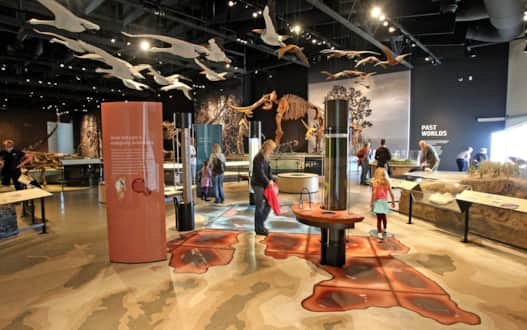
Spanning five floors and tucked along the foothills of the Wasatch Mountains, the Natural History Museum of Utah is also adjacent to the popular Red Butte Garden.
Photo: Natural History Museum of Utah
Natural History Museum of Utah
Why It’s Cool
Learn about the lake while you’re in its namesake city! The Natural History Museum of Utah’s (NHMU) Great Salt Lake exhibit is full of hands-on interactives and dioramas exploring the lake’s unique ecosystem and history. There's a giant lake floor map and a model of the Salt Lake Valley that you can flood to the level of the ancient Lake Bonneville. See one of the living rocks called “microbialites” that power the lake’s ecosystem. Virtually explore the wetland and shoreland habitats that support millions of migratory birds and get up-close with living brine shrimp.
Insider Tip
The museum is updating its Great Salt Lake exhibit this spring to tell the stories of the causes and impacts of the Great Salt Lake’s declining water level. Also be sure to check out NHMU’s brand new audio guide, Insider Stories. The three audio stops in the Great Salt Lake exhibit feature experts from Westminster College’s Great Salt Lake Institute sharing the inside scoop on the past and future of the lake.
Make Your Visit Count
The Natural History Museum of Utah illuminates the natural world and the place of humans within it. The museum provides many opportunities to discover, learn about and connect with Utah’s remarkable natural history — including the iconic Great Salt Lake. Reserve your tickets in advance at nhmu.utah.edu.
"The loss of the lake would also mean the collapse of a vital ecosystem that supports more than 10 million migratory shorebirds and waterfowl each year. Can it be saved? In Utah, the race is on to change the lake's fate. And visitors like you can help."
Even Deeper Learning

The tribal headquarters of the Northwestern Shoshone is located in Ogden. A large number of tribal members currently live along Utah’s Wasatch Front and in Southern Idaho.
Photo: Nicole Morgenthau
Northwestern Tribe of the Shoshone Nation
Why It’s Cool
What do you know about the original inhabitants and stewards of the Great Salt Lake’s lands and waters? There were three major bands of Northwestern Shoshone when the first Mormon pioneers began settling in Northern Utah. Chief Little Soldier headed a group of about 400, who occupied Weber Valley down to its entry into the Great Salt Lake. Chief Pocatello commanded a similar number of Shoshone, who ranged from Grouse Creek in northwestern Utah eastward along the northern shore of Great Salt Lake to the Bear River. The third division of about 450 people, under Chief Bear Hunter, resided in Cache Valley and along the lower reaches of the Bear River. (Read: Nourished By the Land: A Shoshone Perspective)
Insider Tip
Watch a short film documenting the relationship between the Northwestern Shoshone and Antelope Island. In the past, the Northwestern Shoshone traveled with the changing seasons. They looked upon the Earth not just as a place to live but as a family member; in fact, calling the Earth their mother. She was the provider of all they needed for their livelihood. They used a variety of birds, such as ducks and geese, common along the northeast shore of the Great Salt Lake, for meat and eggs. In addition, the Shoshone harvested several varieties of insects, including grasshoppers, crickets, insect larvae and bee eggs.
Make Your Visit Count
Learn more about the Northwestern Band of the Shoshone Nation, including their history, way of life and plans for the future by visiting nwbshoshone.com.
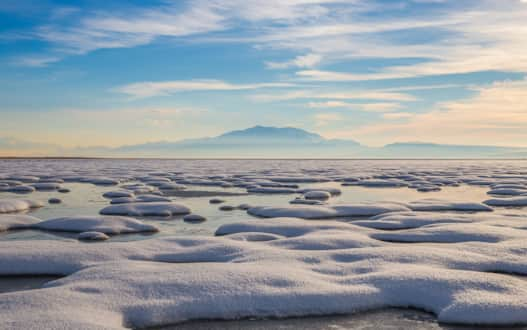
FRIENDS of Great Salt Lake offer a variety of educational resources for learning more about the Great Salt Lake's unique ecology.
Photo: Wei
FRIENDS of Great Salt Lake
Why It’s Cool
Before you plan any trip to the Great Salt Lake, enhance your experience by exploring the education and advocacy resources provided by FRIENDS of Great Salt Lake.
- Education Resources: Learn about the Great Salt Lake's unique ecology.
- Advocacy Resources: Learn about legislative policies that can deliver more water to the Great Salt Lake.
Insider Tip
FRIENDS of Great Salt Lake offers self-guided field trips to Antelope Island State Park or Great Salt Lake State Park to make the most of your visit. You can also use this Printable Field Journal to record your observations as you explore different habitats within the Great Salt Lake ecosystem (the PDF is formatted to print as a double-sided booklet).
Make Your Visit Count
FRIENDS of Great Salt Lake is a nonprofit, membership-based organization founded in 1994 with the mission to preserve and protect the Great Salt Lake ecosystem through education, research, advocacy and the arts. Learn more about their programs at fogsl.org or by following them on Instagram at @friendsofgreatsaltlake.
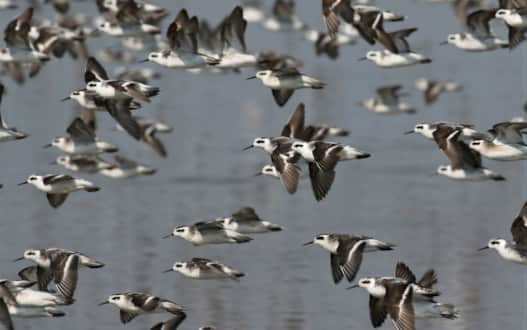
The Great Salt Lake is part of a network of irreplaceable wetland habitats connecting migratory birds to the places they need throughout the entire western hemisphere.
Photo: Max Malmquist
Audubon
Why It’s Cool
Did you know that the Great Salt Lake is part of a network of irreplaceable wetland habitats connecting migratory birds to the places they need throughout the entire western hemisphere? With some species breeding as far north in the high Arctic and overwintering in places as far south as Tierra Del Fuego at the southern tip of South America, the birds of the Great Salt Lake know no boundaries. Learn more about the network at audubon.org.
Insider Tip
Audubon at the Great Salt Lake includes:
- Saline Lakes Program – Part of National Audubon Society’s Western Water Initiative. Their mission: Healthy saline lake ecosystems with reliable water supplies to sustain birds and people.
- Audubon Rockies – The regional office of National Audubon Society for Colorado, Wyoming and Utah.
- Edward L. & Charles F. Gillmor Sanctuary – Protecting 3,597 acres of critically important shorebird habitat along the southern shoreline of the Great Salt Lake.
- Local chapters including Great Salt Lake Audubon (Salt Lake area), Wasatch Audubon Society (Ogden area) and Bridgerland Audubon Society (Logan area).
Make Your Visit Count
Audubon protects birds and the places they need, today and tomorrow, throughout the Americas using science, advocacy, education, and on-the-ground conservation. Check out the links above to learn more about Audubon’s work at the Great Salt Lake, and your local chapter’s website for events and field trips near you.

Mysteries of the Great Salt Lake
A career studying one of the most unique ecosystems in the world might be smelly, but Jaimi Butler wouldn’t trade her time on Great Salt Lake for anything.
What's Nearby
-

Antelope Island State Park
Antelope Island State Park is 25 miles north of Salt Lake City. Accessed by a causeway, the island sits in Great Salt Lake and features free-roaming bison and antelope herds.
-

Bear River Migratory Bird Refuge
This is the Bear River Migratory Bird Refuge, an eye-opening stop along Utah's populous Wasatch Front for any traveler and a top destination for any serious birder with gaps on their life lists.
-

Salt Lake City
Salt Lake City makes a great gateway for travelers visiting Utah's ski resorts or southward to Utah’s renowned red rock country.
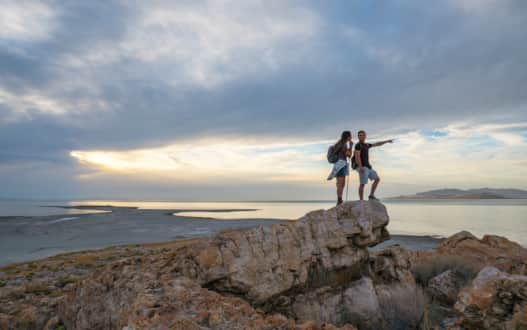

.jpg?w=450&h=294&mode=crop&quality=65)
